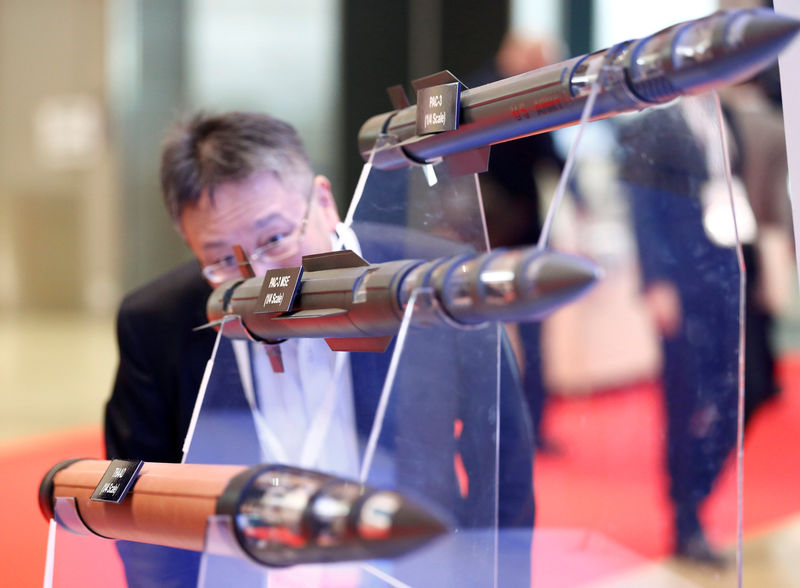By Nobuhiro Kubo and Tim Kelly
TOKYO (Reuters) - Japan may accelerate around $1 billion (804.1 million pounds) of planned spending to upgrade its ballistic missile defences in the wake of rocket tests suggesting North Korea is close to fielding a more potent medium-range missile, three government sources told Reuters.
The outlays, currently in a budget request for the year starting April, includes money to assess a new missile defence layer - either Lockheed Martin Corp's Terminal High Altitude Area Defence (THAAD) system or Aegis Ashore, a land-based version of the ballistic missile defence system used by vessels in the Sea of Japan.
It also covers money to improve the range and accuracy of PAC-3 Patriot batteries, said the sources familiar with the proposal, who asked not to be identified because they are not authorised to talk to the media.
Any rollout of THAAD or Aegis Ashore could, however, still take years, the sources noted. Accelerated spending on Patriot missile batteries is also unlikely to deliver upgrades much quicker because of the limited capacity of the companies involved - Mitsubishi Heavy Industries and Raytheon Co - to speed up already tight production schedules.
"It nonetheless has symbolic value," said one of the sources.
As much as 300 billion yen (2.33 billion pounds) of defence funding will be included in a third supplementary budget, the Sankei newspaper reported earlier. Prime Minister Shinzo Abe's government has yet to say whether it will ask lawmakers to approve additional outlays before deliberations begin on next year's budget.
Officials at Japan's Ministry of Defence were not immediately available to comment.
ARMS RACE
Pyongyang's apparent technological progress on missiles has been faster than anticipated, exposing Japan to a heightened threat, a senior Japanese military commander told Reuters earlier this month.
Tokyo and Pyongyang have been locked in an arms race for two decades after North Korea fired a missile over Japan in 1998.
North Korea has test fired at least 21 ballistic missiles and conducted two nuclear tests so far this year. On June 22, a medium range Musudan rocket reached an altitude of 1,000 km (620 miles) on a lofted trajectory, potentially beyond the range of Aegis destroyers the Sea of Japan that are armed with SM-3 missiles designed to hit warheads at the edge of space.
That leaves older PAC-3 Patriot missiles protecting major cities including Tokyo as a last line of defence. Their upgrade program will not deliver the first improved batteries until the 2020, in time for the Tokyo Olympics.
Warheads from missiles such as Pyongyang's Rodong, with an estimated range of 1,300 km (810 miles), travel at speeds of up to 3 km (2 miles) a second. Payloads on rockets like the Musudan, that can fly as far as 3,000 km (1,860 miles), plunge from space at least twice as fast.
Japan next year plans to acquire a more powerful version of the SM-3 it is jointly developing with the United States, dubbed the Block IIA. It has not, however, said when the first will be deployed.
